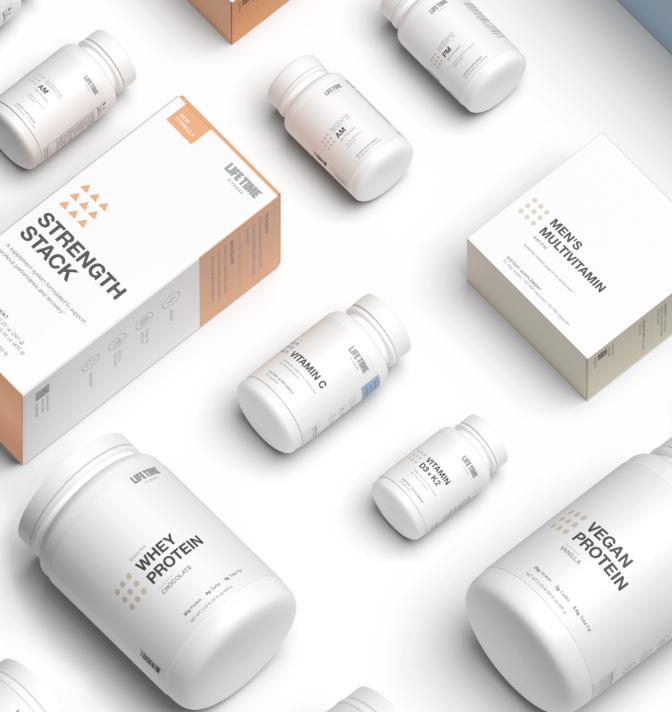For years, Susan Zemke had done everything right. The lean 60-year-old worked out regularly with a personal trainer; ate a healthy, balanced diet; and made sure to get regular health checkups. But in 2010 she was slowly putting on weight and felt sluggish. Once, she even blacked out during a training session. “I felt rotten,” she remembers. “And I just couldn’t figure out what was going on.”
At first, Zemke believed she might simply need more substantial foods. But adding more sources of protein, such as eggs and meat, didn’t improve matters. Perplexed but determined to get to the bottom of her mysterious ailments, Zemke began looking for ways to dig deeper into the problem.
At the time, Zemke was working with Cliff Edberg, a personal trainer and registered dietitian at the Life Time in Chanhassen, Minn. He suggested a series of tests for Zemke, including a complete blood count and screens that would evaluate key nutritional factors, such as the amount of iron and vitamin D3 in her system.
When the results came back, Edberg saw a bright red flag: Zemke’s vitamin-D levels hovered at just 40 nanograms per milliliter (ng/ml). Though many doctors (including Zemke’s) don’t bother advising patients to make changes until their vitamin-D levels dip into the 30s, a range of 50 to 70 is more typical for optimal health (100 ng/ml is considered the upper limit of safe levels).
“I felt that improving that status could help improve her mood, her energy and her overall well-being,” says Edberg.
For Zemke, the findings were jarring. She knew of plenty of reasons for poor health — smoking, inactivity, high cholesterol — but a vitamin-D deficiency never would have made her list. “I had never realized how significant it was,” she says. “Nobody had mentioned vitamin D to me, ever.” She read up on the research and was floored to discover that vitamin-D deficiencies are a widespread problem.
A recent CDC report indicated that one-third of Americans aren’t getting enough of the vitamin. One quarter were at risk of vitamin D “inadequacy” (levels between 30 and 49) and 8 percent were at risk of deficiency. Individuals with darker skin tones are even more likely to be low than those with lighter skin.
It’s a troubling statistic, because studies have linked low levels of vitamin D with everything from obesity to problems with mental clarity. Other research has shown that increasing vitamin-D levels can help reduce insulin resistance, protect against Crohn’s disease and enhance the immune system. (Learn more about vitamin D’s health impacts at ELmag.com/vitaminddebate.)
A Better Balance
To counteract her shortages, Zemke began taking a daily 1000-IU (international unit) dose of vitamin D. “Within a month,” says Zemke, “I felt 100 percent better.” After six weeks, her levels were up over 70. She had more energy and more vitality, and felt happier, too.
Zemke’s vastly improved health began to open up new training options for her. Instead of focusing on just getting better, she and Edberg began working on the goal of getting her stronger.
For months, throughout the winter and spring, the fix seemed perfect. She got her levels tested every four to six weeks to make sure she was on track. Then, suddenly, in the summer of 2011, her levels spiked to 118.
Although Zemke hadn’t noticed any problems, she learned that in some people, levels above 110 can lead to a range of symptoms, including constipation, vomiting and heart-rhythm abnormalities, and can result in long-term bone and kidney damage.
Edberg advised her to cease her supplementation regimen for the summer, suspecting that all the extra time Zemke was spending enjoying the outdoors might be the culprit. And he was right.
Vitamin D is often called “the sunshine vitamin,” and for good reason. Though it’s rarely found naturally in foods, people often get the required amount just by spending some time outside. Zemke’s supplement provided just the right amount of vitamin D when she was inside during cold-weather months, but caused her levels to climb too high in warmer months when she spent more time outside working on her yard or taking long walks in the local arboretum.
“Seeing someone get above the recommended amount of vitamin D at a relatively low dosage like this is very uncommon,” says Edberg, “but it’s not entirely surprising when you consider that the sun was always intended to be our primary source of vitamin D.”
A simple adjustment in Zemke’s supplementation was all it took to get her levels back to normal very quickly.
These days, she customizes her vitamin-D supplementation based on her daily plans. “During the week, when I spend most of my time in the office, I take a supplement,” she says. “But on the weekends, when I like to be outside, I don’t.”
Zemke also considers factors like whether or not she is wearing sunscreen, and how much skin exposure she’ll likely have that day.
She appears to be getting the formula right: Today, her vitamin-D levels hover between 80 and 100 ng/ml. But she still gets her lab tests every six months just to be safe. Edberg notes that there is a good deal of variability in how well individuals absorb vitamin D, and how they assimilate it under varying circumstances. “That’s why the best way to optimize your vitamin-D levels is to test to get a baseline, get some sun or take some vitamin D, then retest your levels a few weeks later and adjust your approach accordingly.”
Beyond the Numbers
Over the past several months, Zemke has continued to refine her diet and exercise regimen, and to make solid fitness gains. But she credits her vitamin-D testing as the catalyst that vaulted her health and fitness to a new level and gave her the motivation to pursue new goals.
When Edberg proposed that Zemke enter the “figure” category in a bodybuilding competition, she initially scoffed — and then reconsidered, eventually taking him up on the idea. In the four competitions in which she’s participated, she’s placed as high as second in her division, often besting competitors nearly half her age.
From Zemke’s point of view, it’s all a testament to the power of information. “If it weren’t for that important piece of vitamin-D data,” she says, ”I would have just gone on my way thinking I would be OK. But I wasn’t OK. And without that information, I never could have gotten to the place I needed to be.”
Want to get your vitamin-D levels tested? Consult your doctor, or try a direct-to-consumer lab service like those offered by HealthCheckUSA (www.healthcheckusa.com).
Success Summary
Meet: Susan Zemke, 60, a leadership development consultant in Minneapolis.
- Big achievement: Took control of her health by optimizing her vitamin-D levels after lab testing revealed a deficiency.
- Big inspiration: Alleviating the exhaustion that had dogged her for months.
- What worked: Regular testing and simple supplementation tweaks that helped her keep her levels within a healthy range, regardless of the season.
- What didn’t work: Assuming that a healthy diet and regular exercise regimen was enough to maintain health. “I followed the conventional wisdom for [diet and exercise], but I had no idea how important vitamin D is, or that I was at risk of a deficiency.”
- Words of Wisdom: “There’s a lot of [media hype] about other health problems, like cholesterol, for example. But there are so many other things that are just as significant to your health that you never hear about. You shouldn’t wait until you’ve got major problems to get tested.”





This Post Has 0 Comments